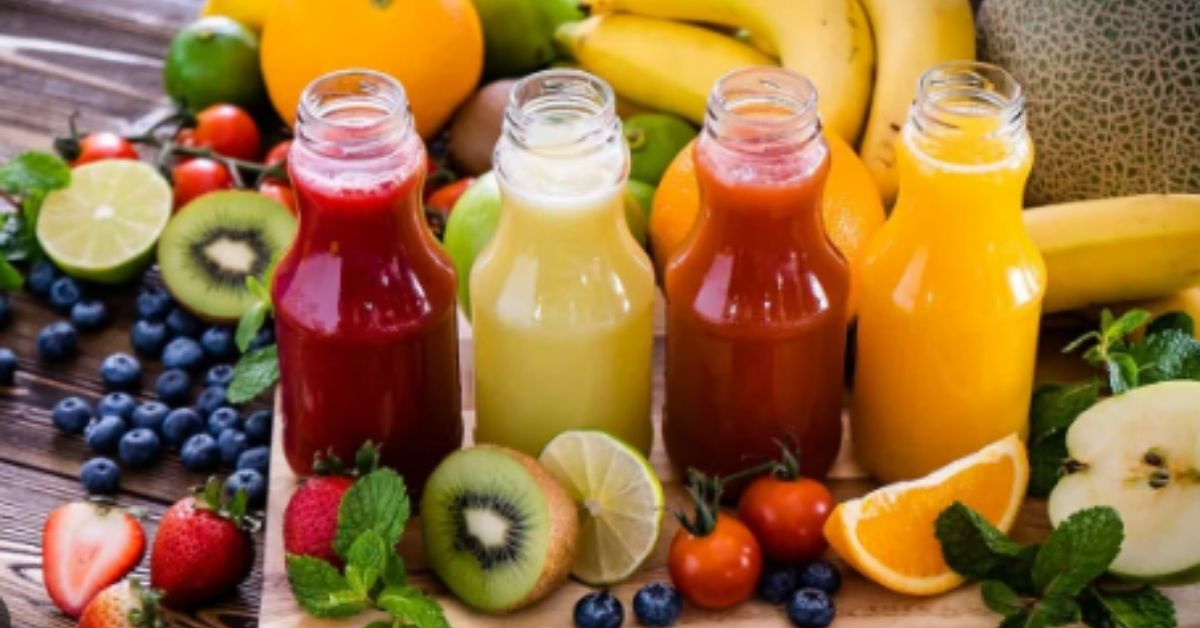When you reach for a glass of juice, you’re not just choosing between flavors but also between pasteurized and unpasteurized options. Each type offers distinct benefits and potential drawbacks that can impact your health and enjoyment. Understanding these differences is key to making an informed choice that aligns with your dietary needs and preferences.
Pasteurized juices have undergone a heating process designed to kill harmful bacteria and extend shelf life. This makes them a staple in grocery stores. On the other hand, unpasteurized juices are often heralded for their fresh, vibrant flavors and higher levels of certain nutrients, appealing to health enthusiasts who seek food in its most natural state.
As you navigate the aisles or consider pressing your own juice at home, knowing the ins and outs of these two types can enhance your drinking experience and support your lifestyle goals. Let’s dive deeper into what sets these juices apart and how you can choose the best option for your health.
Understanding Pasteurization
What Is Pasteurization?
Pasteurization is a heat treatment process that destroys bacteria in food and drink products to increase their safety and extend shelf life. Named after the French scientist Louis Pasteur, who first developed the technique in the 1860s, pasteurization involves heating a substance to a specific temperature for a defined period of time and then cooling it immediately. This method is commonly applied to products like milk, juices, canned food, and others to reduce microbial growth and prevent spoilage.
The Process of Pasteurizing Juice
Understanding the steps involved in pasteurizing juice allows you to appreciate why it might be chosen over unpasteurized options. The primary goal is to make the juice safe for consumption by eliminating potential pathogens that can cause illnesses.
- Heating: Juice is heated quickly to a temperature usually between 70°C and 85°C (158°F and 185°F).
- Holding: The juice remains at this temperature for a few seconds to several minutes, depending on the desired level of preservation and the type of juice.
- Cooling: Immediately after heating, the juice is cooled rapidly to halt the pasteurization process, thereby preserving taste and preventing further changes in its chemical structure.
By following these steps, pasteurized juice offers a safer alternative, especially for those at risk of food-borne illnesses, without sacrificing much of the taste and quality of the juice.
Health Benefits of Pasteurized Juice
Safety from Pathogens
Pasteurized juice offers a significant health advantage by protecting you from pathogens such as E. coli, Salmonella, and Listeria. The pasteurization process, which involves heating the juice to a specific temperature, ensures that these harmful microorganisms are destroyed. If you prefer juice that’s safe from food-borne illnesses, opting for pasteurized products can provide peace of mind, knowing that the potential for contamination is greatly reduced.
Shelf Life Extension
Another crucial benefit of pasteurized juice is its extended shelf life. Unlike unpasteurized juice, which can spoil quickly, pasteurized juice remains consumable for a much longer period. This longevity is achieved through the heat treatment, which not only destroys pathogens but also deactivates enzymes that cause spoilage. This makes pasteurized juice a more practical choice if you’re not planning to consume it immediately or if you need a product that retains its quality over time.
Pros and Cons of Unpasteurized Juice
Taste and Nutritional Content
Unpasteurized juice, often referred to as raw juice, offers a distinct taste that many find superior to its pasteurized counterpart. It retains the natural flavors and aromas of the fruits and vegetables from which it is extracted, providing you with a taste that’s as close to nature as possible. Moreover, unpasteurized juice tends to have higher levels of vitamins, enzymes, and minerals. These nutrients can undergo degradation when subjected to the high temperatures used in pasteurization. For instance, vitamin C and certain B vitamins, which are heat sensitive, remain more intact in unpasteurized juices. This makes unpasteurized juice a preferable option if you’re seeking maximum nutritional benefits from your beverage.
Risks and Considerations
However, the benefits of unpasteurized juice come with potential risks. Without the pasteurization process, these juices can contain harmful bacteria and pathogens such as E. coli, Salmonella, and Listeria. These organisms pose a serious health risk, particularly for pregnant women, young children, the elderly, and individuals with weakened immune systems. The absence of pasteurization means that unpasteurized juice has a significantly shorter shelf life and must be consumed quickly to avoid spoilage. Additionally, it requires careful handling and refrigeration to maintain its safety and quality. When choosing unpasteurized juice, it’s crucial to purchase from reputable sources and consume the juice within a short timeframe to minimize health risks.
Regulatory Perspectives
Navigating the rules and regulations governing juice safety ensures you consume products that meet safety standards and accommodate your lifestyle preferences. This section dives into the U.S. regulations, focusing on the pasteurized versus unpasteirzed perspective.
FDA Guidelines on Juice Pasteurization
The Food and Drug Administration (FDA) stipulates clear guidelines for juice producers. These regulations emphasize pasteurization to protect public health. The FDA requires that all juice manufacturers follow the Hazard Analysis Critical Control Point (HACCP) systems. This system involves seven principles ensuring that juices are free of pathogens that could harm the consumer. If you choose pasteurized juice, it’s almost guaranteed to have undergone one of the FDA-recommended processes, like heat treatment, to eliminate harmful bacteria and extend its shelf life.
Moreover, the FDA imposes strict labeling requirements. These ensure that juices that have not been pasteurized must carry a warning label. This label informs consumers, particularly those from vulnerable groups such as the elderly, pregnant women, young children, and immunocompromised individuals, of the potential risks.
State-Specific Regulations in the U.S.
State-specific regulations can vary widely, giving you additional factors to consider when purchasing juice. While federal guidelines provide a baseline, states may impose stricter or additional requirements. For instance, some states might require additional testing of unpasteurized juices or mandate different labeling to better inform consumers of the risks involved.
California, known for its rigorous health and safety standards, mandates that all unpasteurized juices sold in retail must bear explicit warnings and be kept at specific temperatures to minimize bacterial growth. On the other hand, states like New York might focus more on the licensing and inspection of facilities producing these juices.
Knowing these regulations will help you make more informed decisions about which juice products align with your health and safety considerations, especially when choosing between pasteurized and unpasteurized options.
Consumer Choices
How to Choose Between Pasteurized and Unpasteurized Juice
When deciding between pasteurized and unpasteurized juice, consider both the potential health benefits and risks. If you prioritize safety and have health concerns, especially if you’re serving children, elderly individuals, or anyone with a weakened immune system, pasteurized juices are your best option. They undergo a heating process that kills most bacteria, ensuring a safer product. On the other hand, if you’re seeking more natural flavors and higher levels of certain nutrients, like enzymes and vitamins that might be reduced during pasteurization, unpasteurized juice might appeal to you. However, it’s crucial to consume these juices promptly and purchase them from reputable sources to mitigate the risks of bacterial contamination.
Labeling and What to Look For
Understanding labels is key to making informed choices about juice. For pasteurized juices, labels often highlight “pasteurized” prominently. You might also find additional information regarding the juice’s nutrient content, which can help you assess what you’re getting out of your purchase. When looking at unpasteurized juice, scrutinize labels for any warnings about potential health risks. Labels should state that the product is unpasteurized and may carry a risk of bacterial contamination. If you’re in a state with specific regulations, such as California, expect to see more detailed warnings and possibly information on handling and storage practices to ensure safety. This labeling ensures you’re fully informed about the risks and benefits before making a purchase.
Conclusion
Choosing between pasteurized and unpasteurized juice boils down to your priorities: safety or natural qualities. If your focus is on minimizing health risks especially for children the elderly or those with compromised immune systems pasteurized options are ideal. Conversely if you’re drawn to richer flavors and more robust nutrient profiles and are willing to navigate the risks unpasteurized juice might be your pick. Always pay close attention to labels and source your juices from reputable suppliers to enjoy your favorite drinks without compromising on safety.
Related Posts:
- Natural vs Refined Sugar: Health, Environmental, and Economic Impacts
- Pasteurized vs Unpasteurized Juice: A Comprehensive Guide to Safety and Nutrition
- Managing IBS Symptoms: Effective Carbohydrate Choices and Tips
- Ketogenic Juicing Guide: Low-Carb Recipes & Essential Tips
- Top Homemade Juice Recipes to Lower Cholesterol & Boost Heart Health
- Stomale-Friendly Meals: Top Recipes & Tips for Stomach Ulcer Relief
- Ultimate Brain Detox Juice Recipe for Enhanced Cognitive Health
- Lung Juice: Boost Your Respiratory Health with This Ginger-Lemon-Honey Beverage
- Quick Turmeric Juice Recipe for Inflammation Relief & Health
- Top Juices for Inflammation Relief: Tips and Recipes


